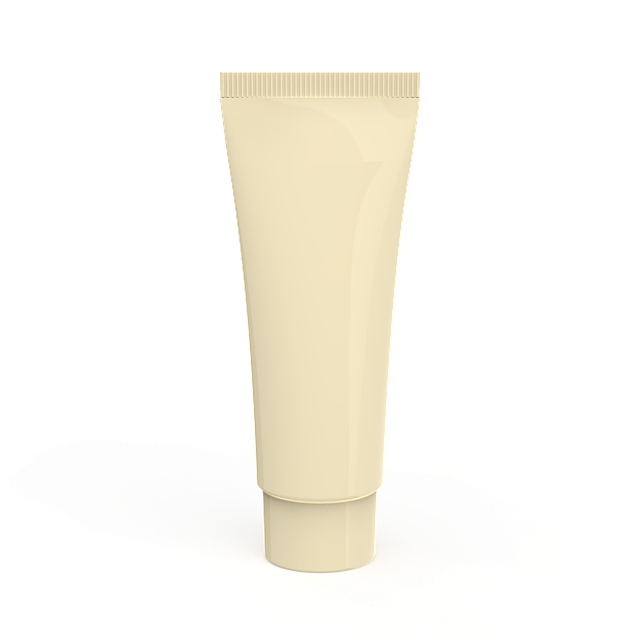Non-surgical skin tightening offers a safe, effective, and non-invasive approach to achieving a firmer, more youthful complexion. Advanced technologies like radiofrequency, ultrasound, and topical serums enriched with peptides and vitamins stimulate collagen production at a cellular level, enhancing skin elasticity and tone without downtime or significant discomfort. This modern technique targets areas such as the face, neck, and body, providing visible results that can last for months. As a popular choice for those seeking rejuvenation without surgery, non-surgical skin tightening continues to gain traction due to its compelling benefits, particularly in combating age-related skin degradation by revitalizing collagen production.
Uncover the secrets to achieving a firmer, youthful complexion with non-surgical skin tightening techniques. As we age, our skin’s elasticity takes a hit due to natural processes and environmental factors, leading to wrinkles and sagging. This article delves into the science behind collagen boosting treatments, offering a comprehensive guide to non-invasive skin tightening. From understanding the skin’s structure to exploring cutting-edge technologies, we’ll cover everything you need to know about reclaiming your confidence with minimal downtime. Discover targeted areas for treatment, learn to choose the right procedure, and explore post-treatment care, setting realistic expectations for long-lasting results.
# Non-Surgical Skin Tightening: Unlocking a Firmer, Youthful Complexion

Non-surgical skin tightening offers a revolutionary approach to achieving a firmer, more youthful complexion without the need for invasive procedures. This modern technique leverages advanced technologies and topical treatments to stimulate collagen production at a cellular level. By targeting specific areas of concern, such as the face, neck, and body, non-surgical methods provide a safe and effective alternative to traditional surgery.
One of the key benefits of non-surgical skin tightening is its ability to improve skin elasticity and tone without downtime or significant discomfort. Through various methods like radiofrequency, ultrasound, and topical serums enriched with peptides and vitamins, these treatments promote collagen synthesis, enhancing the skin’s natural ability to support and firm its structure. This results in a visibly tighter, smoother appearance that can last for months, making it an increasingly popular choice for those seeking a non-invasive way to rejuvenate their skin.
<section id="understanding-the-skin’s-structure-and-aging-process“>
Understanding the Skin's Structure and Aging Process

The skin, our body’s largest organ, is a complex structure comprised of multiple layers, each playing a vital role in its overall health and appearance. Understanding this intricate architecture is key to comprehending how it ages and responds to various treatments, including non-surgical skin tightening techniques. The outermost layer, the epidermis, serves as a protective barrier against environmental aggressors while the dermis, lying beneath, provides structural support through collagen and elastin fibers, keeping skin firm and supple.
Aging is a natural process that impacts this delicate balance. Over time, certain factors like sun exposure, gravity, and lifestyle choices contribute to collagen and elastin breakdown, leading to visible signs of aging such as wrinkles, sagging, and reduced skin elasticity. Non-surgical skin tightening methods aim to counteract these effects by stimulating the production of new collagen, enhancing skin firmness, and minimizing the appearance of age-related skin changes, thus offering a more youthful and toned complexion without invasive procedures.
– Delve into the layers of the skin and how collagen plays a critical role in its elasticity.

Collagen, often referred to as the “building block” of our skin, is a protein that forms an intricate network within the dermis, providing structural support and elasticity. It’s this natural framework that keeps our skin firm and supple, allowing it to bounce back after movement or changes in temperature. In the context of non-surgical skin tightening, understanding collagen’s role becomes paramount; by enhancing its production and integrity, we can achieve noticeable improvements in skin texture and tone, resulting in a more youthful appearance.
The skin’s layers reveal a complex interplay where collagen dominates. The dermis, situated beneath the epidermis, contains specialized cells known as fibroblasts that produce and maintain this protein. As we age or are exposed to certain environmental factors, collagen synthesis can slow down, leading to reduced elasticity and the formation of fine lines and wrinkles. Non-surgical skin tightening treatments aim to stimulate fibroblasts, encouraging them to create more collagen, thereby revitalizing the skin’s natural ability to retain its tight, toned appearance without invasive procedures.
– Explain natural aging and environmental factors that contribute to skin laxity.

The natural aging process plays a significant role in skin laxity, as collagen and elastin fibers—the building blocks responsible for our skin’s elasticity and firmness—diminish over time. This decline occurs due to several internal factors, such as hormonal changes, genetic predisposition, and the constant turnover of skin cells. As we age, our body produces less of these essential proteins, leading to a loss of skin tightness and tone.
Environmental factors, including prolonged sun exposure, pollution, and excessive facial expressions, also contribute to premature skin aging and laxity. Sun damage, in particular, accelerates collagen degradation and disrupts the skin’s natural healing process, resulting in wrinkles, fine lines, and a lack of elasticity. Moreover, repeated facial expressions like smiling or frowning can lead to dynamic wrinkle formation, further weakening the skin’s structural support. Non-surgical skin tightening treatments aim to combat these effects by stimulating collagen production, enhancing skin firmness, and reducing the appearance of age-related laxity.
<section id="the-science-behind-collagen-boosting-treatments“>
The Science Behind Collagen Boosting Treatments

Collagen is a key protein responsible for maintaining skin elasticity and firmness, making it a focal point in many non-surgical skin tightening treatments. As we age, our bodies produce less collagen, leading to wrinkles, sagging, and loss of skin tension. Collagen boosting products and procedures work by stimulating the body’s natural production of this vital protein, offering a more youthful appearance without surgery.
Common techniques for non-surgical skin tightening include the use of specific peptides, vitamins, and growth factors that have been shown to enhance collagen synthesis. Intense Pulsed Light (IPL) therapy, microwave energy, and radiofrequency devices also promote collagen production by damaging the dermis in a controlled manner, triggering the body’s repair mechanisms which increase collagen and elastin fibers over time. These approaches provide effective alternatives to surgical procedures, offering significant improvements in skin texture, tone, and overall tightness without downtime or invasive techniques.
– Explore the science and technology behind non-surgical skin tightening techniques.

Non-surgical skin tightening has evolved significantly in recent years, driven by advancements in technology and a deeper understanding of the skin’s complex structure. At the heart of many modern treatments is collagen, a protein that provides structural support to our skin, giving it elasticity and a youthful appearance. Non-invasive procedures like radiofrequency (RF) therapy, laser skin tightening, and ultrasound stimulate collagen production on a cellular level. These techniques use targeted energy delivery systems to heat specific layers of the dermis, triggering fibroblasts—the cells responsible for producing collagen—to become active, resulting in improved skin firmness and reduced wrinkles.
The beauty industry’s shift towards non-surgical solutions has led to the development of highly effective and safe technologies. For example, RF devices emit controlled radio waves that heat the dermis, promoting collagen synthesis and stimulating elastin production. Similarly, laser therapy uses specific wavelengths of light to target and break up loose skin fibers, while ultrasound leverages sound waves to tighten and lift the skin without incisions or downtime. These non-surgical skin tightening methods offer a range of benefits, including minimal discomfort, quick recovery times, and long-lasting results, making them increasingly popular alternatives to surgical procedures.
– Discuss the various methods to stimulate collagen production, such as RF (Radiofrequency), ultrasound, and topical applications.

Collagen is a key protein that provides structure and elasticity to our skin, making it an essential component in achieving a youthful appearance. Stimulating collagen production is therefore a popular strategy in non-surgical skin tightening treatments. One such method is Radiofrequency (RF) technology, which uses targeted heat energy to prompt the body’s natural collagen renewal process. This non-invasive procedure is effective in lifting and firming the skin by improving its elasticity.
Another approach involves ultrasound, utilizing high-intensity sound waves to penetrate the dermis layer. This technique promotes collagen synthesis and fibroblast activity, leading to improved skin texture and reduced appearance of fine lines and wrinkles. Topical applications, including creams and serums containing ingredients like retinol, vitamin C, and peptides, are also popular. These products stimulate collagen production by targeting specific cellular pathways, offering a more gradual but consistent approach to skin tightening compared to procedures like RF or ultrasound.
